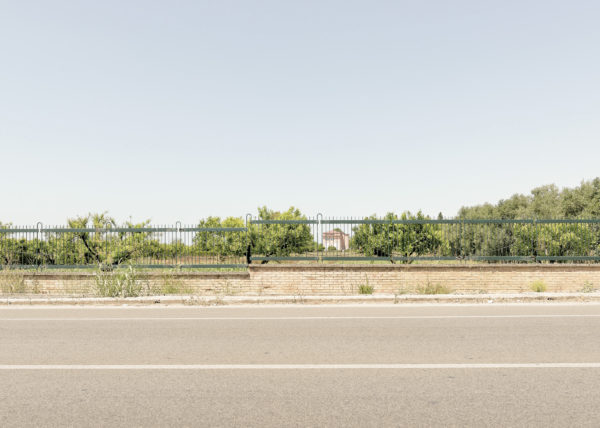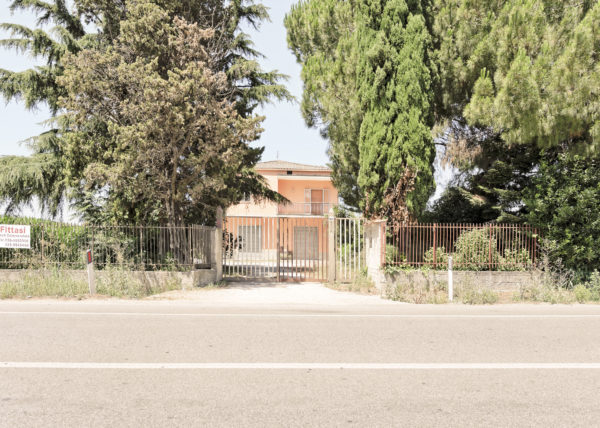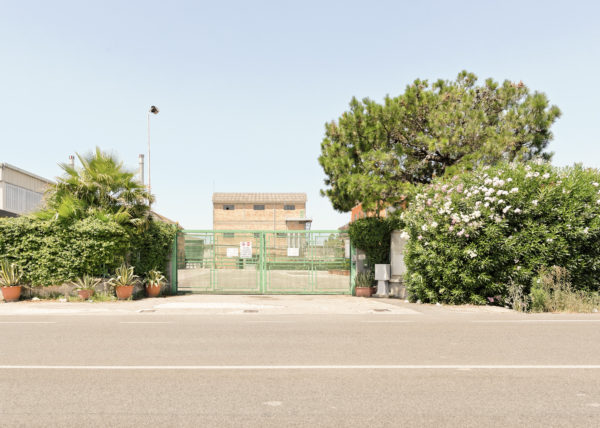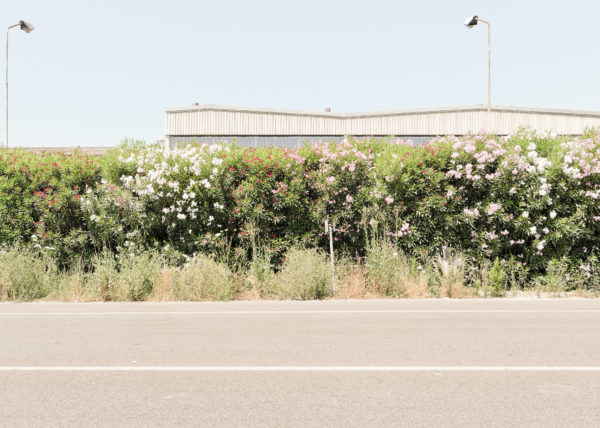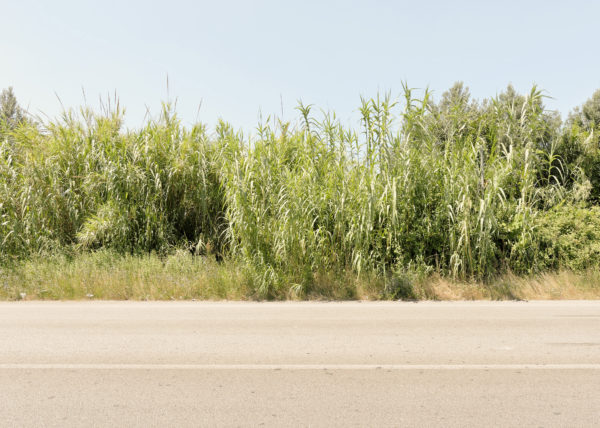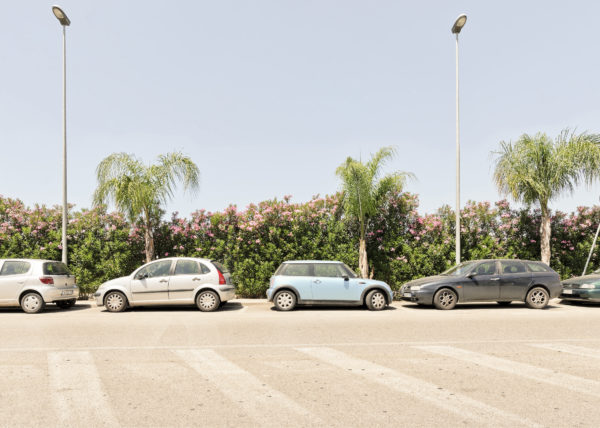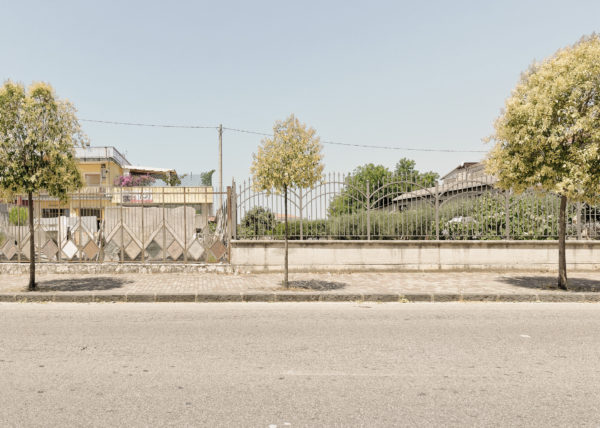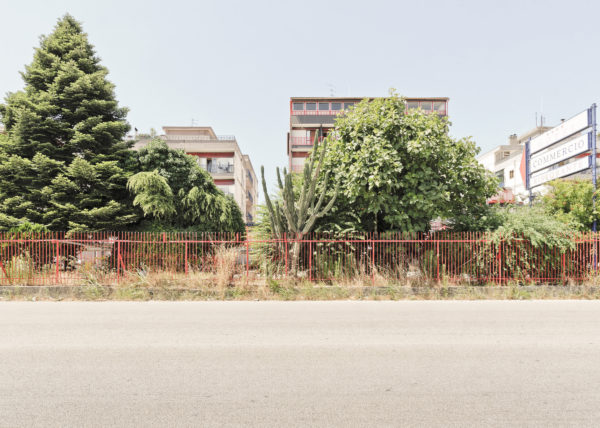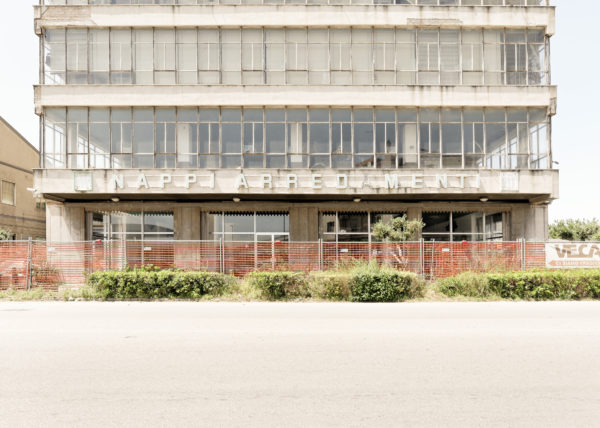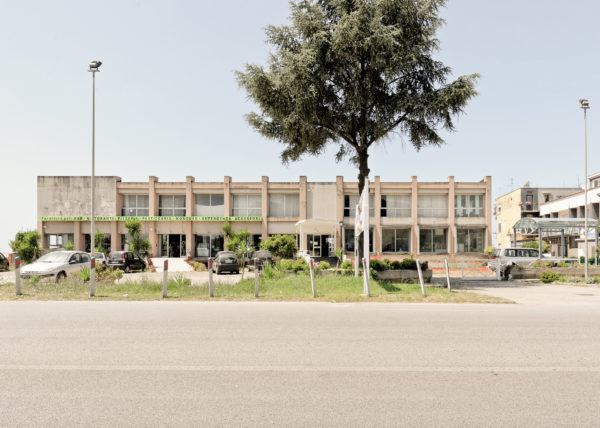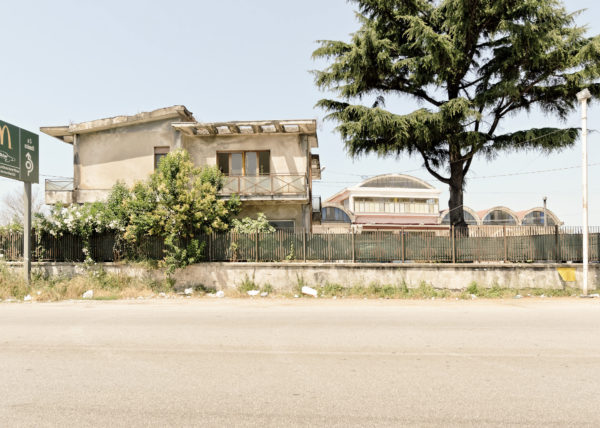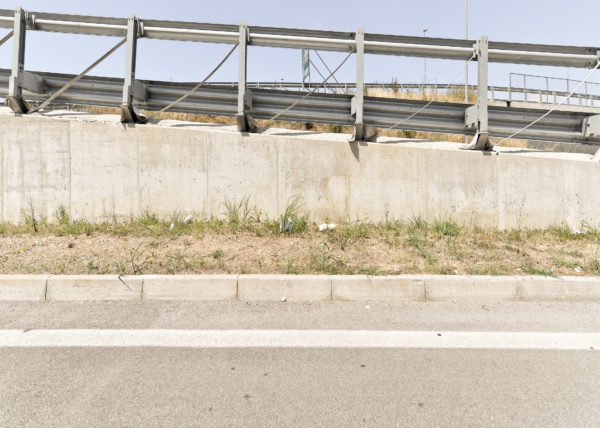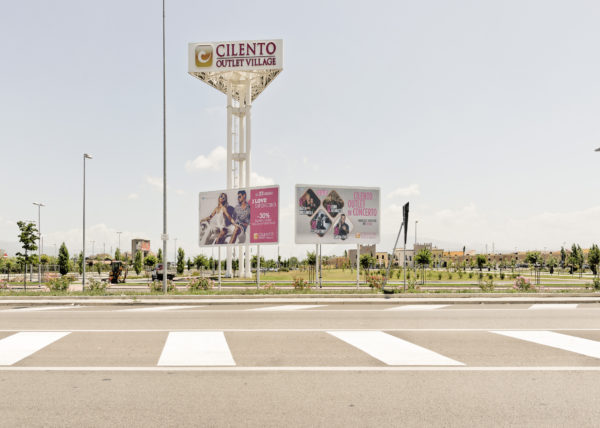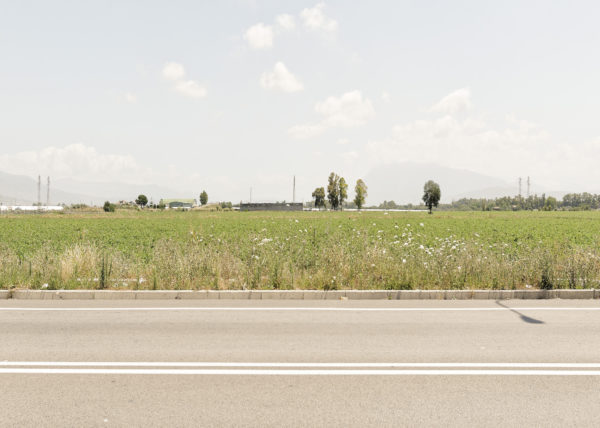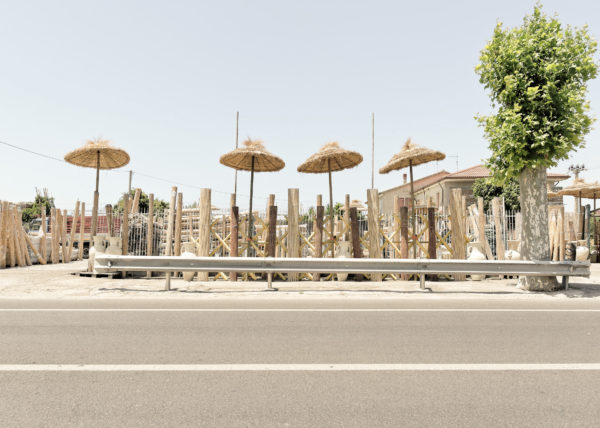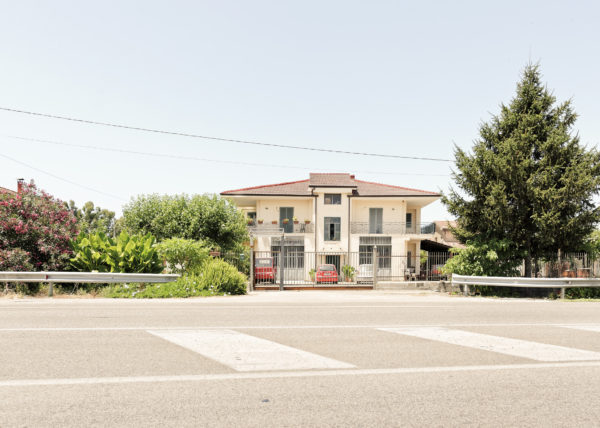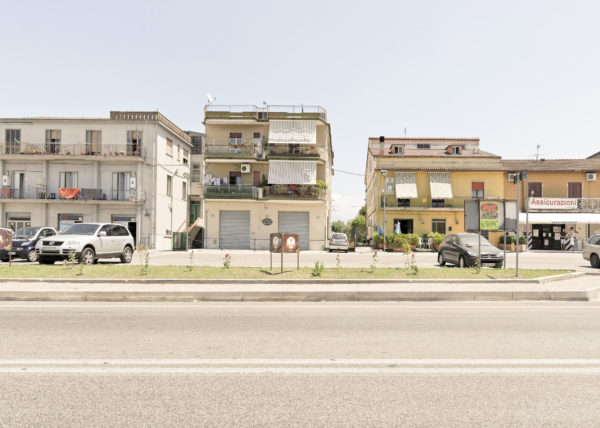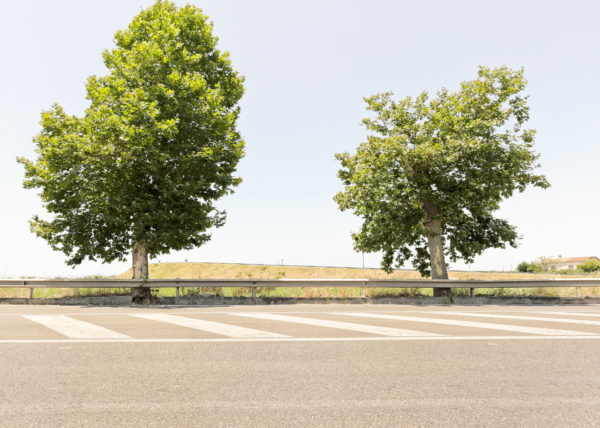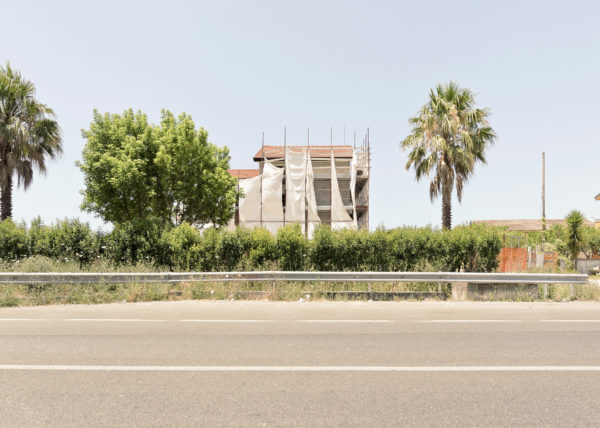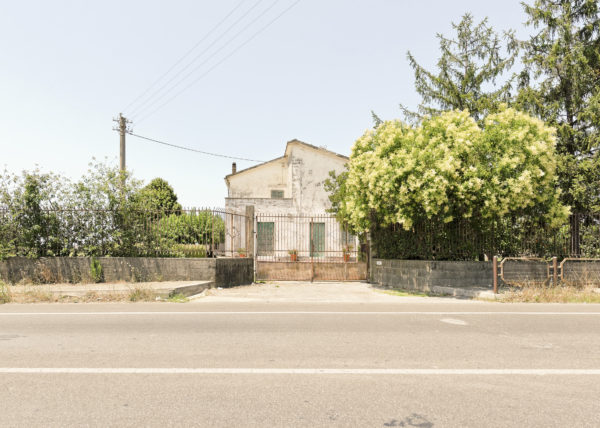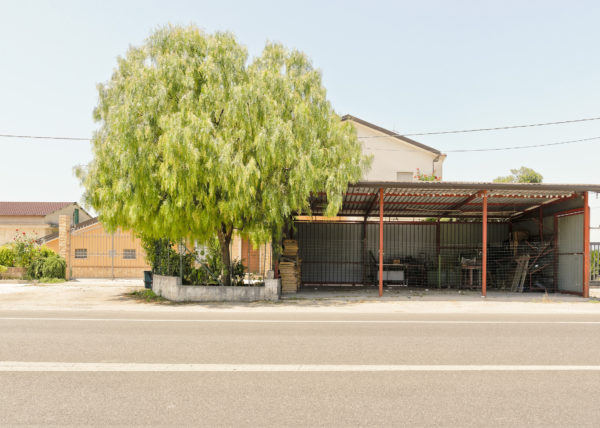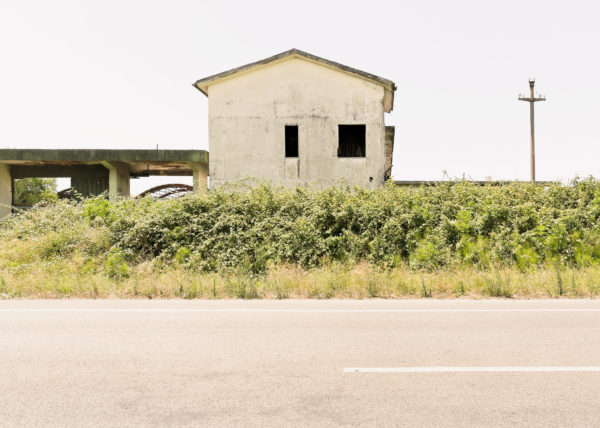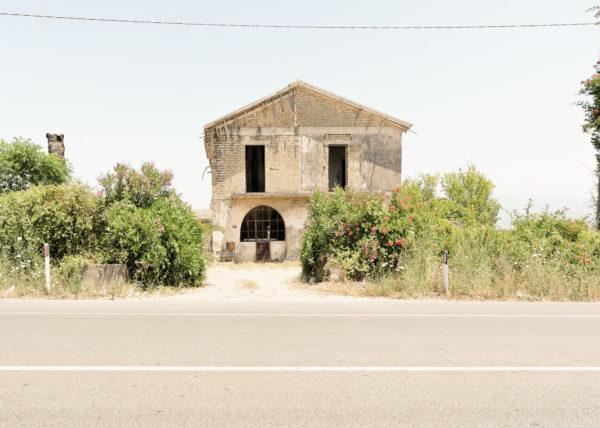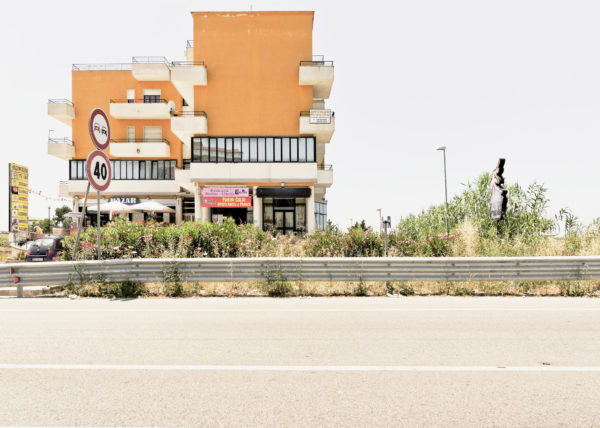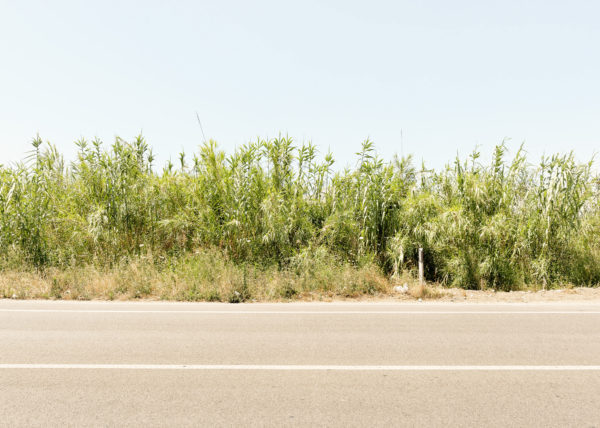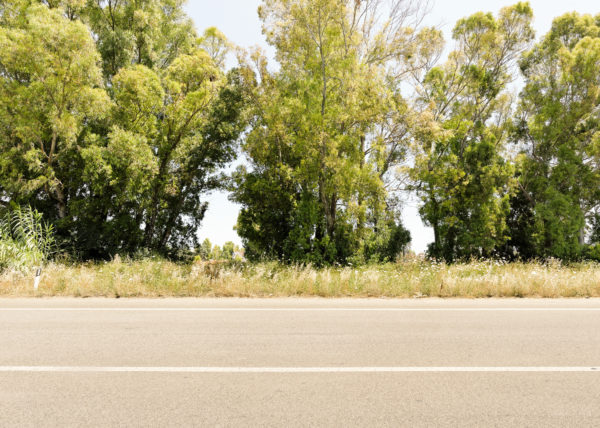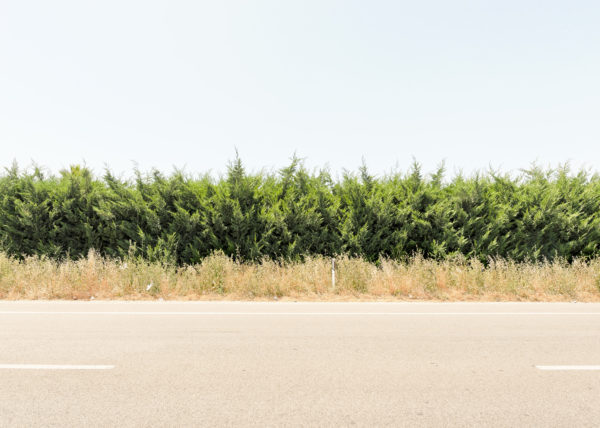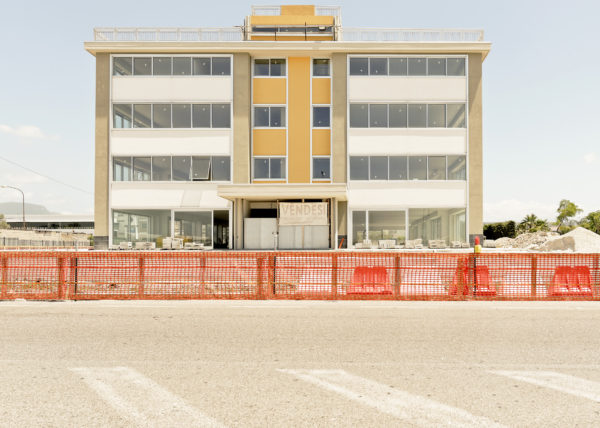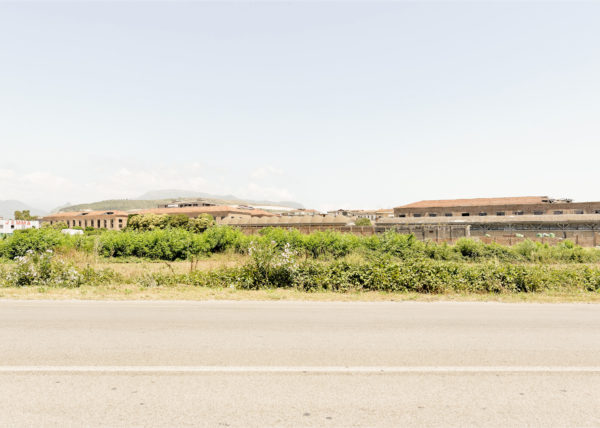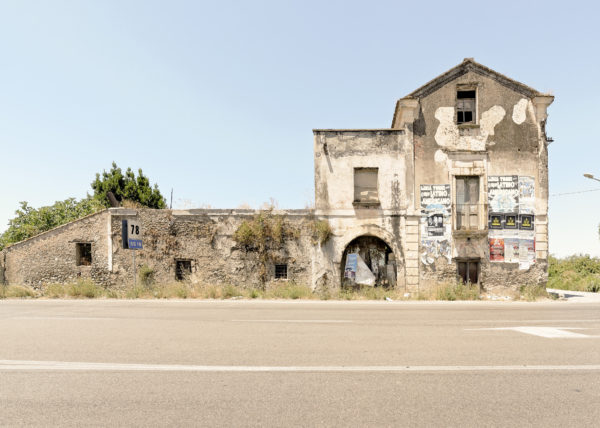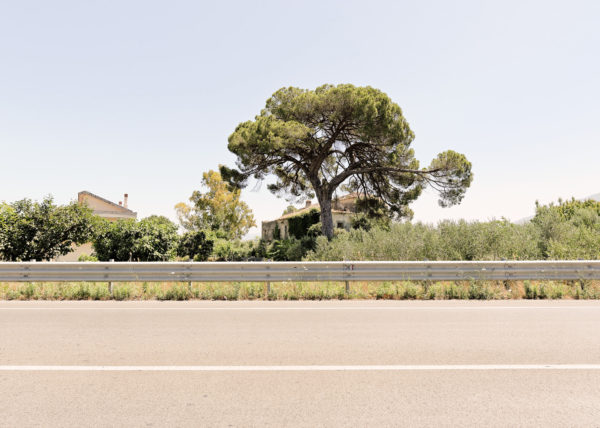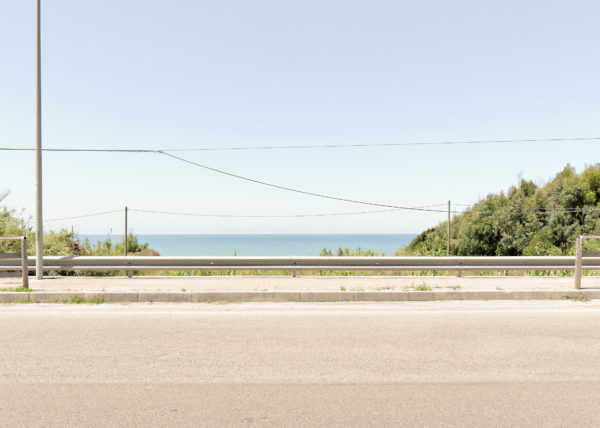La Statale 18
La strada, la vita ai lati, la camera infinita.
La Statale 18 è una delle tante arterie stradali del sud Italia. Una strada mortale, disseminata di curve, ponti e gallerie, incantevoli scorci, ma anche di brutture vergognose. E’ un paesaggio senza pace. Vi emergono i costrutti pletorici e brutti di un abusivismo demente e forsennato, la gestione sconsiderata delle coste cementificate, ma anche le contraddizioni di insediamenti nobili e antichi, ma immiseriti e spopolati, e nuovi slums cresciuti a casaccio e a dismisura a ridosso di località sul mare che uniscono ai loro panorami mozzafiato, un’inquietudine umana talvolta cupa e nascosta, altre volte ostentata e violenta.
A pochi chilometri dalla più famosa e famigerata Salerno-Reggio Calabria, corre dunque questo lunghissimo nastro di asfalto, dolorosamente tortuoso e disarticolato, ma ininterrotto e anodino. Una strada che unisce tutte le località tirreniche poste sull’arco di costa che corre dalla Campania alla Calabria. Un tracciato che appare oggi, da uno sguardo più ravvicinato e partecipe, alla stregua di uno specchio, insieme fedele e deforme, non solo della più caotica e affollata realtà dell’immenso suburbio contemporaneo, né più paese - né mai città, che ha attecchito come un cancro che impasta quotidianamente cemento e vita ai lati di questa che è, soprattutto d’estate, una delle statali più trafficate e sottosopra che attraversano il paesaggio un tempo splendido e intoccato delle regioni del Sud. La Statale 18 in circa 600 Km, correndo da Napoli a Reggio Calabria, un chilometro dopo l’altro percorre e adegua al suo profilo accidentato e deforme, il ritratto ippocratico di un intero paese che ha smarrito il senso dei luoghi e il suo accordo con la vita civile.
Ripercorrere con occhi nuovi la Statale18 è quindi un’occasione intellettuale e artistica, oltre che un’avventura di conoscenza umana e civile, indispensabile per comprendere e descrivere da vicino un’Italia ancora pasolinianamente incapace di una modernizzazione progredita, che si dibatte tra degrado ambientale, soprusi umani e disagi sociali, e una natura che, pur mortalmente offesa e degradata, talvolta ancora resiste e riluce di una bellezza imbrattata eppure incomparabile, persino sacrale, in alcuni dei suoi più reliquiari frammenti.
Franco Sortini con il suo accurato lavoro fotografico dedicato al paesaggio della Statale 18, affronta gli scenari a lui più noti di questa lunga strada, come se li rappresentasse con la precisione istantanea e continua tipica del movimento del carrello camera del cinema; stessa altezza, stessa postura da cineoperatore, stessa continuità di sguardo e capacità di taglio dell’inquadratura. Il suo lavoro è concentrato sul tratto salernitano della statale, da Battipaglia ad Agropoli. Tutte le foto sono state scattate con la stessa inquadratura, dall’altezza del finestrino della macchina. Coprono circa 30 km. L’intento è quello di una sorta di cartografia discreta, una documentazione della generalità della strada che della strada propone anfratti e ridossi svisti, solinghi e per lo più dispersi in un paesaggio oramai infranto ed eteroclito, tipico della surmodernità alle latitudini del Sud; quasi che il tracciato originario di questa strada cardinale, talvolta ridotto a sinopia labile e indiziario, fosse ancora in grado di trasformare la traccia sfusa della strada in una sorta di rassicurante, antico, portolano. Se uno mette in fila gli scatti i frammenti ritratti da Sortini ritrovano una insospettata unità, una forma domestica, potrebbero quasi riprodurre un'unica immagine.
Più che un panorama reintegrato, quello proposto da Sortini è piuttosto un diorama poetico che resta composito e vago, in cui il paesaggio e i suoi oggetti, talvolta minimi, altre volte fastidiosi e ingombranti, emergono dallo spazio per situarsi nell’immagine fotografica assumendo sembianze smunte, fantasmatiche e talvolta interrogative, che peraltro proprio per questa via ne potenziano il carattere oscuro e interrogativo. E non di rado, proprio con riguardo al cinema, più che al richiamo alle forme del linguaggio della fotografia italiana di paesaggio di cui pure il lavoro di Sortini è informato, queste immagini della Statale 18 ricordano la fissità oniroide, allusiva e inquietante di certe inquadrature di Antonioni.
The road, the life on the sides, the infinite camera.
The Highway 18 is one of the many roads in southern Italy. A deadly road, dotted with curves, bridges and tunnels, enchanting foreshortenings, but also of shameful ugliness. It is a landscape without peace. The plethoric and ugly constructs of a demented and crazy abusiveness emerge, the reckless management of the cemented coasts, but also the contradictions of noble and ancient settlements, but impoverished and depopulated, and new slums grown haphazardly and out of proportion behind seaside resorts that unite their breathtaking views with a sometimes dark and hidden human anxiety, sometimes ostentatious and violent.
A few kilometers from the most famous and infamous Salerno-Reggio Calabria, therefore, runs this very long strip of asphalt, painfully tortuous and disjointed, but uninterrupted and anodyne. A road that connects all the Tyrrhenian towns located on the arc of the coast that runs from Campania to Calabria. A path that appears today, from a closer and more participatory gaze, like a mirror, both faithful and deformed, not only of the most chaotic and crowded reality of the immense contemporary suburb, nor more country - nor city, which has taken root like a cancer that daily mixes cement and life on the sides of this way, one of the busiest state roads that cross the once splendid and untouched landscape of the Southern regions. The State Road 18 in about 600 Km, running from Naples to Reggio Calabria, one kilometer after the other he traces and adapts to his bumpy and deformed profile, the portrait of an entire country that has lost the sense of places and its agreement with civil life.
Retracing the highway18 with new eyes is therefore an intellectual and artistic opportunity, as well as an adventure of human and civil knowledge, indispensable for understanding and closely describing an Italy that is still incapable of advanced modernization, debating environmental degradation , human abuses and social hardships, and a nature that, even though mortally offended and degraded, sometimes still resists and shines with a smeared yet incomparable beauty.
Franco Sortini with his careful photographic work dedicated to the landscape of the highway 18, deals with the scenarios best known to him in this long road, as if he represented them with the instant and continuous precision typical of the movement of the cinema chamber trolley; same height, same cameraman posture, same gaze continuity and framing cutting ability. His work is concentrated section of the highway, from Battipaglia to Agropoli. All the photos were taken with the same position, from the height of the car window. They cover about 30 km. The intent is that of a sort of discrete cartography, a documentation of the generality of the road that proposes the streets and shelters, solitary and mostly scattered in a now broken and heteroclite landscape, typical of the latitudes of the South; almost as if the original route of this cardinal road, sometimes reduced to a preparatory drawing and circumstantial, was still able to transform the loose track of the road into a sort of reassuring, ancient, pilot book. If one puts the shots in a row the fragments portrayed by Sortini find an unsuspected unity, a domestic form, they could almost reproduce a single image.
Rather than a reinstated panorama, the one proposed by Sortini is rather a poetic diorama that remains composite and vague, in which the landscape and its objects, sometimes minimal, sometimes annoying and bulky, emerge from space to situate themselves in the photographic image, assuming a dim appearance and sometimes interrogative, which, however, precisely for this reason, enhance its obscure and interrogative character. And not infrequently, precisely with regard to cinema, more than to the reference to the forms of the language of Italian landscape photography of which even the work of Sortini is informed, these images of the Highway 18 recall the allusive and disturbing fixity of certain shots of Michelangelo Antonioni.
Mauro Francesco Minervino


